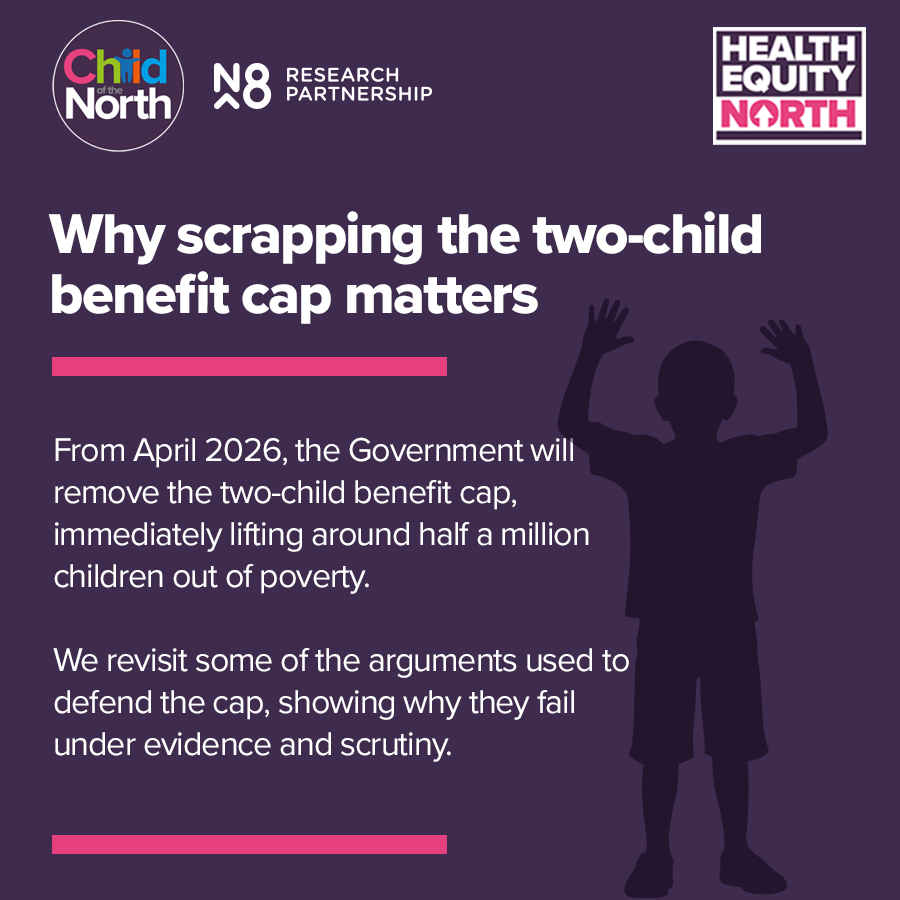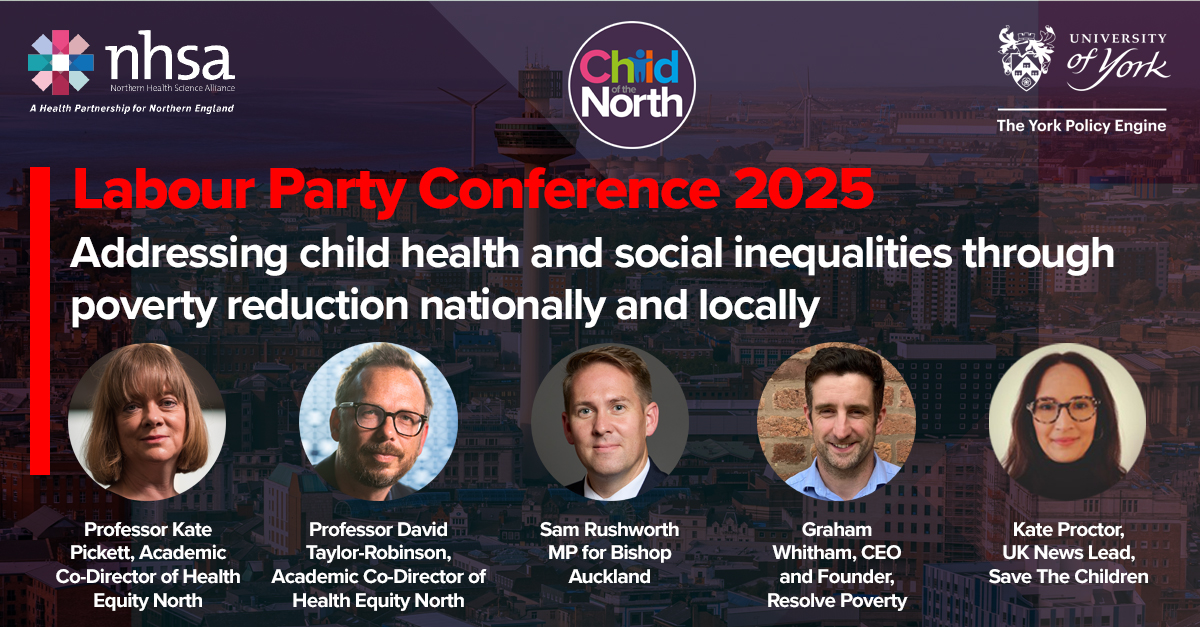BLOG: Why Scrapping the Two-Child Benefit Cap Matters

By Head of Public Affairs Alexis Darby
The Chancellor Rachel Reeves MP announced in the Autumn Budget that, from April 2026, the Government will remove the two-child benefit cap. Introduced in 2017, the cap blocked Universal Credit payments for third and subsequent children born after 6 April 2017.
This change marks one of the most significant reversals of welfare policy in a decade – particularly for families in the North of England, where the impact of austerity and rising living costs has been especially severe.
Before considering the wider context, it’s important to revisit the arguments that were used to defend the cap, and to understand why they fail under evidence and scrutiny.
To remove the cap would cost the government almost £3bn
Removing the cap is estimated to cost £3bn a year by 2029–30,1 but this is modest in the context of overall government spending. More importantly, the long-term costs of child poverty for the state, such as poorer health, lower educational outcomes, and reduced lifetime earnings, far exceed this figure. The Child Poverty Action Group found that in 2023, the wider societal costs of child poverty had risen to over £39 billion a year, due to both higher prices and higher rates of child poverty. 2 Investing in children now prevents far greater public expenditure across the life course.
It’s not fair to working families
Many families affected by the cap are working. There has been a significant rise in ‘in-work poverty’ over the last decade, where 65% of children and working-age adults in poverty in 2023/24 lived in families where at least one adult was working part-time or more, up from 56% in 2012/13 and 44% in 1996/97.3
Government data from 2024 shows that 59% of families affected by the two-child limit have at least one parent working. 4
Fairness should be measured by children’s needs, not their parents’ circumstances. Penalising a third child does nothing to help low-income working families- all it does is deepen inequality.
People will have more children to claim more benefits
This stereotype has been repeatedly disproven. Raising a child costs far more than the small additional benefit provided, and there is no evidence that the two-child cap has led people to have fewer children. No credible research suggests that families plan the size of their households based on welfare rules.
It improves the incentive to work
There is no evidence that the two-child cap encouraged people into employment. Decisions about work are driven by job availability, wages, and access to affordable childcare – not by withholding support from children.
A study from the London School of Economics shows no evidence that capping child benefits boosts employment. Labour market participation among larger families appears resistant to benefit cuts, likely due to caregiving commitments and barriers to paid work. 5
To make a real difference, the Government’s Child Poverty Taskforce must prioritise affordable childcare, while the government supports the creation of well-paid, secure jobs – ensuring families have both the financial support and opportunities they need to thrive.
Support should be targeted elsewhere
Improving support in one area does not justify removing it from larger families. Ensuring all children have adequate resources is itself a targeted and effective social investment.
Fiscal responsibility requires keeping the cap
Child poverty drives future spending on health, social care, and lost earnings. Supporting children now is fiscally responsible, preventing far greater costs throughout their lives.
The “Rape Clause”
The policy included the controversial “rape clause,” which only exempted women from the cap if a child was conceived through rape or coercive control, and required them to disclose this abuse to access support. Since 2017, this has been one of the most harmful aspects of an already damaging policy.6
Women should never be penalised for a child conceived through abuse. In practice, the clause was retraumatising, intrusive, and often ineffective.
Poverty has no return on investment
The cap was always counter-productive in terms of cost savings – the original motivation for the enforced limit.
Scrapping the two-child cap is not only welcome – it is essential. Organisations working with vulnerable families estimate that 109 children were pushed into poverty every single day because of the policy.7 With 4.5 million children – around one in three – now living in poverty, the removal of a rule that deliberately withheld support from some children was a necessary step toward reversing a decade of rising deprivation.
Ending the cap means that children are no longer penalised for their birth order. It helps families meet the cost of food, heating, clothing, and other essentials at a time when living costs remain high. More importantly, lifting the cap reduces immediate hardship for hundreds of thousands of children, supports healthier development, and contributes to long-term social and economic wellbeing. A society that invests in all its children equally is stronger, more productive, and more humane.





